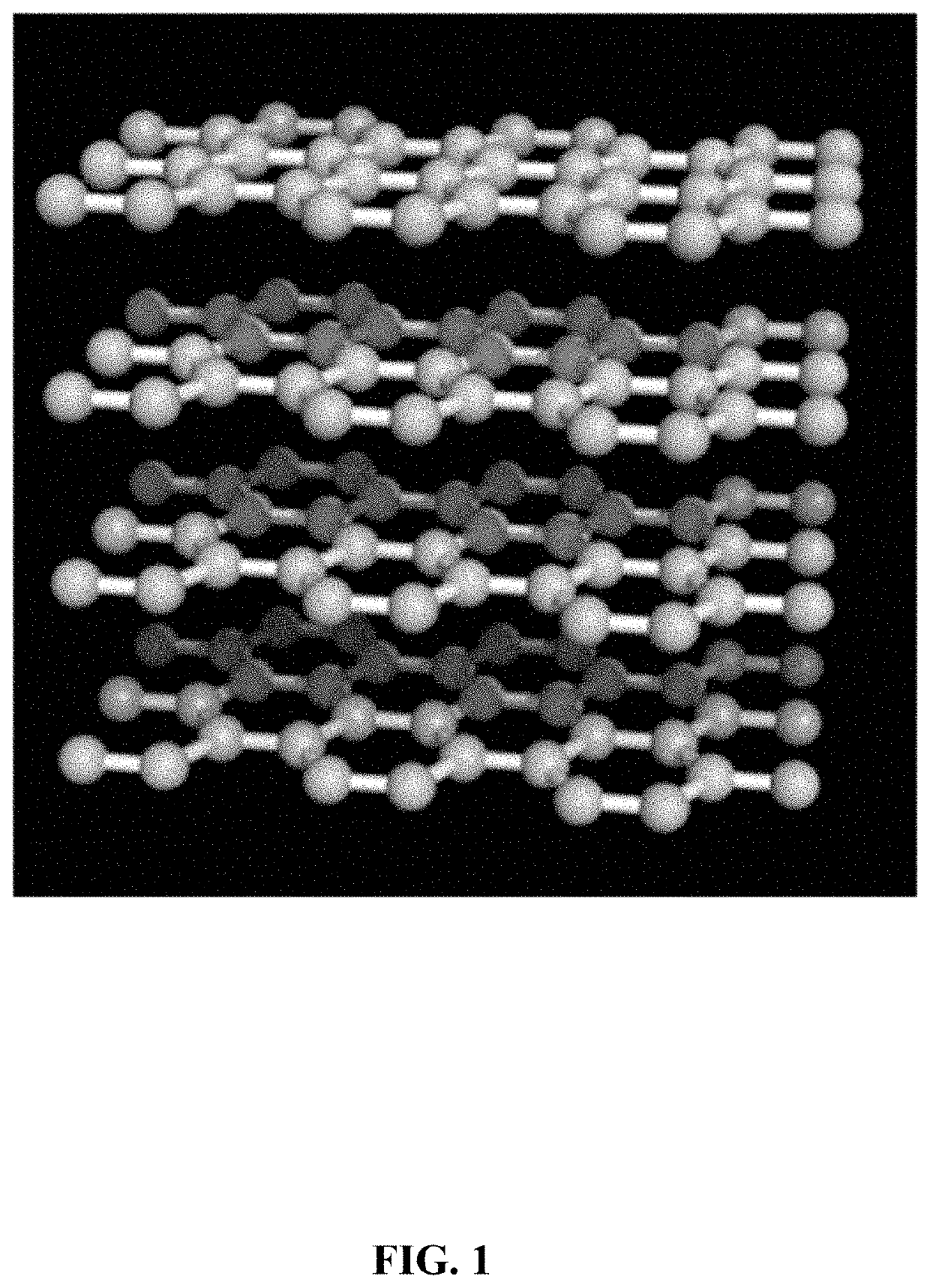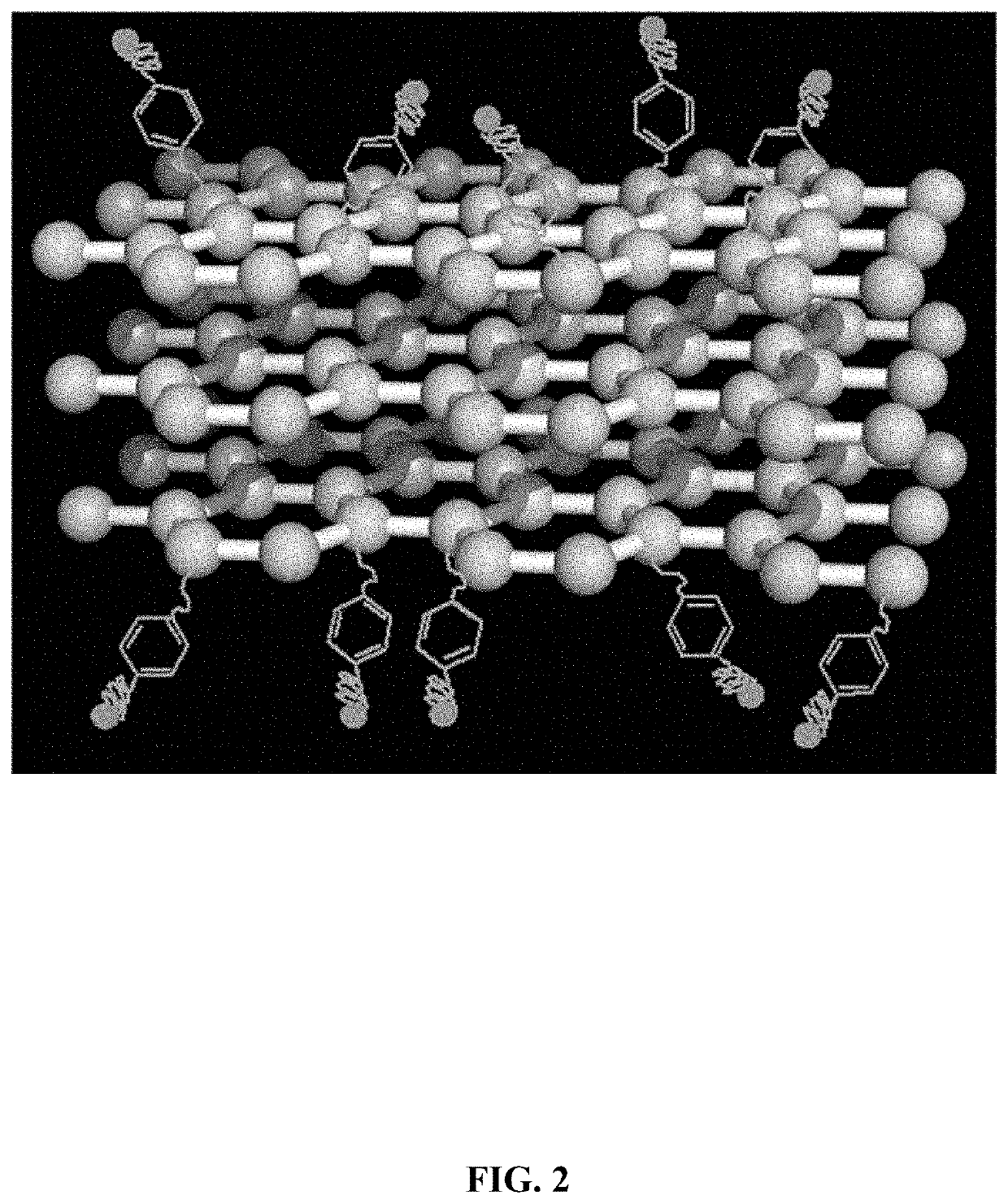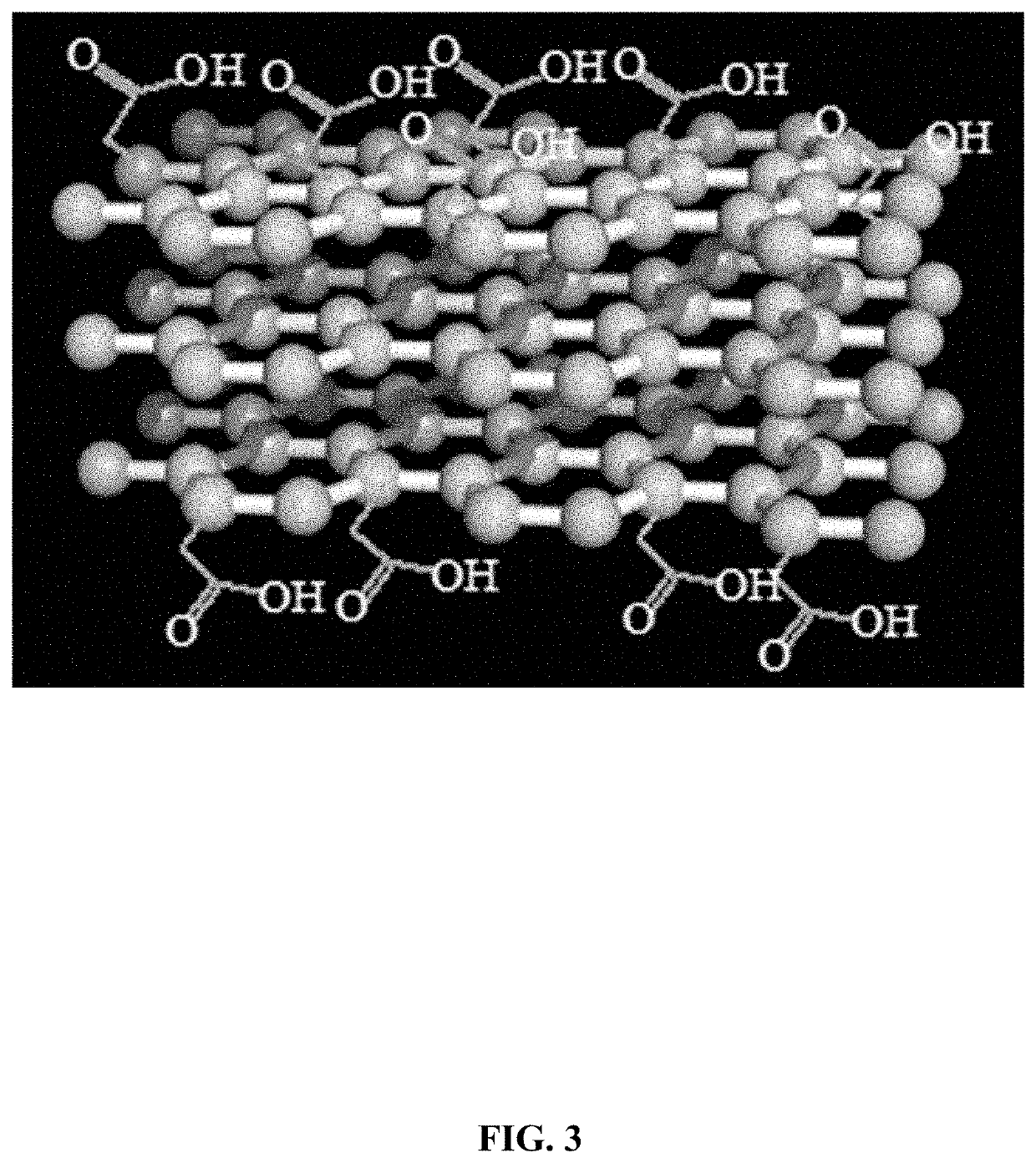Using graphite nano-platelets to improve the integrity of oil and gas wells
- Summary
- Abstract
- Description
- Claims
- Application Information
AI Technical Summary
Benefits of technology
Problems solved by technology
Method used
Image
Examples
example 1
Covalent Chemical Treatment: Acid Functionalization
[0047]A mixed solution of nitric (70 wt. %) and sulfuric (96 wt. %) acids with a volume ratio of 1:3 were provided. 1 wt. % GnPs were added to the solution, and the mixture was stirred for 4 hours at 80° C. Then, GnPs were washed by deionized (DI) water and 5% HCl. To this end, after adding DI water or HCl to the mixture, it was held still for 24 hr, and then the top part of the diluted mixture was carefully removed. This washing process was repeated if the sulfate ions were detectable in the diluted mixture. The process of washing by acetone was continued to remove CCFs. These fragments are organic molecules consisted of condensed aromatic graphitic rings with several functional groups are formed during GNP functionalization. CCFs are as reactive as functionalized carbon nanoparticles with hydrating cement but their reaction does not result in the mechanical reinforcement of the produced composite. It is the chemical reaction of CC...
example 2
Non-covalent Physical Treatment: Polymer Wrapping
[0048]Two different approaches for polymer wrapping of GnPs: (1) using the poly acrylic acid (PAA) and (2) applying the combination of PVP and SDS were evaluated.
[0049]PAA
[0050]1 gram of GnPs were added to 133 mL DI water. 10% PAA by weight of GnPs was also added to the mixture. The mixture was sonicated for 30 min in ambient temperature and stirred overnight. Sonication was performed using a Fisher Scientific, FS30D with the ultrasonic power of 130 W and the operating frequency of 40 kHz. Then, the mixture was filtered through 0.2 μm filter and followed by deionized water washing for three times to remove excess PAA.
[0051]Combination of PVP and SDS
[0052]1 gram of GnPs were dispersed in 400 mL DI water with the aid of 1% SDS concentration
(MSDS1000mLwater×100=1%).
1% by weight of
PVP(MPVPMw+MSDS+MPVP+MGnPs×100=1%)
was also mixed to the blend. Mx (x=PVP, SDS, GNPs, and w) is the mass of the corresponding material x, for example, Mw is the ...
example 3
[0053]The modified GnPs were re-dispersed in the amount of distilled water required to prepare the cementitious matrix. The mixture of water and acid functionalized GNPs were sonicated for 1 hr and stirred for 3 hr. The mixture of water and modified GnPs by polymer wrapping were sonicated for 2 hr and followed by stirring overnight. Then, API class-G cement was added to the mixture in the mixer. The ratio of water / cement was 0.44 by weight. For the case when GnPs were modified using polymer wrapping, the nanoadditive concentration of 0.13% by weight of cement (BWOC) was examined. For the case when GnPs were subjected to the acid functionalization procedure, the effect of different concentrations of GnPs was examined on the overall behavior of cement. To this end, the following volume ratios were considered,
VGNPsvdehydratedcement×100=0.4,0.2,
and 0.1%, in which, Vx is the volume of the material x, GnPs or the dehydrated cement.
[0054]Studies were conducted o...
PUM
| Property | Measurement | Unit |
|---|---|---|
| Fraction | aaaaa | aaaaa |
| Fraction | aaaaa | aaaaa |
| Fraction | aaaaa | aaaaa |
Abstract
Description
Claims
Application Information
 Login to View More
Login to View More - R&D
- Intellectual Property
- Life Sciences
- Materials
- Tech Scout
- Unparalleled Data Quality
- Higher Quality Content
- 60% Fewer Hallucinations
Browse by: Latest US Patents, China's latest patents, Technical Efficacy Thesaurus, Application Domain, Technology Topic, Popular Technical Reports.
© 2025 PatSnap. All rights reserved.Legal|Privacy policy|Modern Slavery Act Transparency Statement|Sitemap|About US| Contact US: help@patsnap.com



